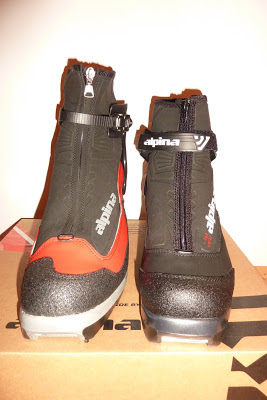 |
| KS ultralight gear waistpack full of big Chestnuts |
With a bit of research I found one man cottage factory in Japan KS Ultralight gear owned and run by Mr. Laurent Barikosky. His waist pocket looked exactly what I was looking for and after few emails he sent* me one to test it out.
 |
| KS Ultralight gear waist pocket in full configuration at water source |
 |
| Wearing the waistpack. Side view, and fatty belly:) |
Here are my observations:
- main material is Dyneema nylon fabric which ensures extra strenght of the waistpack and longetivity of the product. Overall weight of waistpack with two extra side pockets is 190g. All zippers are YKK brand and made in water resistant version. Money well invested I will say,
- waistpack consist of 25mm waistbelt to which one 5L main compartment and two mesh side pockets are permanently attached,
- there is a simple pull drawcord at the top of the main compartment to adjust its volume or to hold lightweight items like windshirt (on the picture above you can see it holding my windshirt). Nice long zipper on the main compartment opens up both ways (two pull tabs) and give you option to take out what you need on the go. The zipper operates smoothly and two pull tabs open it up both ways independently,
- mesh side pocket perfectly holds one 0,5L water bottle. There are two so you can take lots of water on the long stretch. Bottles are secured with a lenght of elastic drawcord which works great and adds extra security on the bumpy ride. I've also put beanie and gloves into one of them if taking only basic waistpack configuration. Extra elastic draw cord helps you to close off the mesh pocket so you don't loose your items. There's minimal stertch in mesh. Once loaded with heavy water bottle it holds its shape very well.
 |
| Basic configuration. Main compartment with mesh bottle holder, drawcord. |
 |
| Back side. Note comfy mesh padding and long fin shaped waistbelt. |
- to all this you have the option to add or remove single 1L side pocket if more or less volume is needed. Two side pockets are available and are huge bonus when you plan to take more. They are box shaped and thus hold a lot. Nice smooth running zipper opens up easily to give you access to the pockets volume (the zipper pull tab below was replaced with glow in the dark version so I can see it in dark) and internal glove hook is handy to secure your car keys.
 |
| Extra waist pocket. Note boxy shape, two vertical attachment straps and two hooks |
 |
| Two cord loops. Anchoring points for extra side pocket. |
 |
| Showing attachment loops and vertical straps that hold side pocket. |
What I find unique and very meticulous in extra pocket desing beside its boxy shape is that the attachment pack hooks are not placed at the same level like on most extra belt pockets but are placed in such a way that once pocket is attached to the waistbelt it doesn't curve with your waist curve but holds its boxy shape very well thus not reducing its volume or giving hard time to unzip and access. Once you wear the waistpack you can see how well this works.
 |
| Wearing waistpack. Note how well the extra pocket holds it boxy shape! |
Waistbelt buckle is easy to adjust and it holds very well. If you have small day pack and need to add a bit more volume to it you can easily use extra side pockets on your pack waist belt as well. I'll add anchoring points on my Golite Ion to attach waist pockets secure and easy.
 |
| Extra side pocket on day pack to add more volume! |
With winter pushing in I am happy to own this little gem as my needs for more volume will be getting bigger. Also I started XC skiing last year so additional volume in the waistpack will be handy while plodding about in full out winter.
If you are looking for your next waistpack or would like to add extra volume to your current pack I would suggest you look at Mr. Laurents work. He offers lot of customization on the gear he makes and beside waistpack he designs, tests and makes lots of high quality backpacking gear. Check him out. A true cottage manufacturer. All thumbs up!
*I pay for the shipping cost of the waistpack. Thank you Mr. Laurent for your generosity and helping me out with your waistpack.












